How to Create the Best Retaining Wall
The importance of suitable materials and professional construction to create a long-lasting, durable, and visually appealing retaining wall
Retaining walls are common in landscaping and garden projects, providing aesthetic and functional benefits. Choosing the best pavers ensures the wall’s stability and longevity. Bricks or pavers are popular materials for retaining walls, offering durability, strength, and versatile design options that blend well with any landscaping design. Proper installation is crucial to ensure the pavers are level and secure.
To create a long-lasting, durable, and visually appealing retaining wall, it is essential to choose suitable materials and work with a professional contractor because they can provide the proper construction.
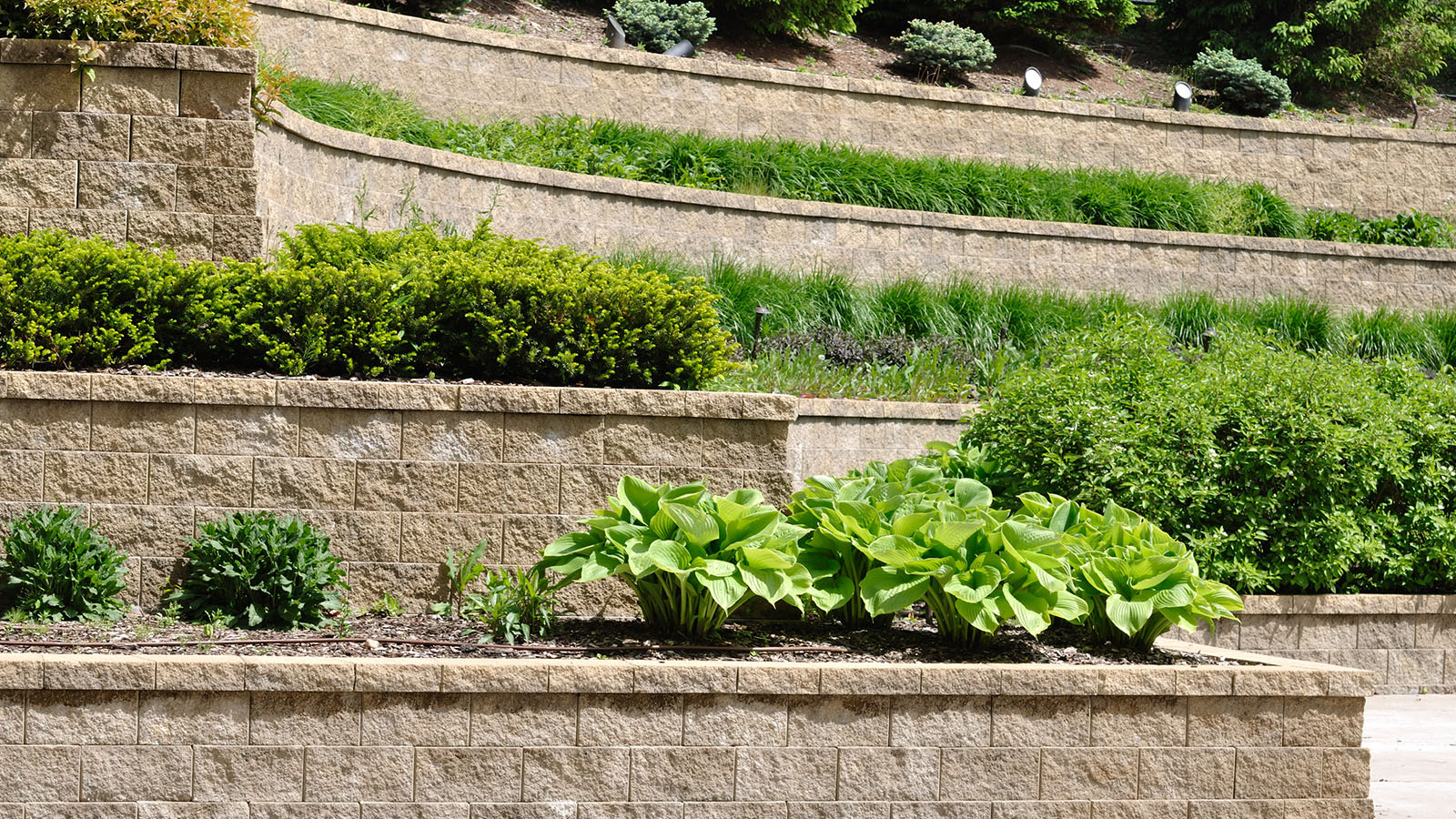

Is a Retaining Wall Worth It?
A retaining wall made of pavers or bricks can solve practical landscaping challenges like sloping or uneven ground. It can create a functional and visually pleasing space, providing additional seating and privacy. Furthermore, a well-constructed wall can add value to a property and increase curb appeal.
The ground’s topography is crucial, as retaining walls are designed to hold back soil and create level surfaces. A retaining wall can be valuable to any garden or landscaping project by selecting the right pavers or bricks and ensuring proper installation.
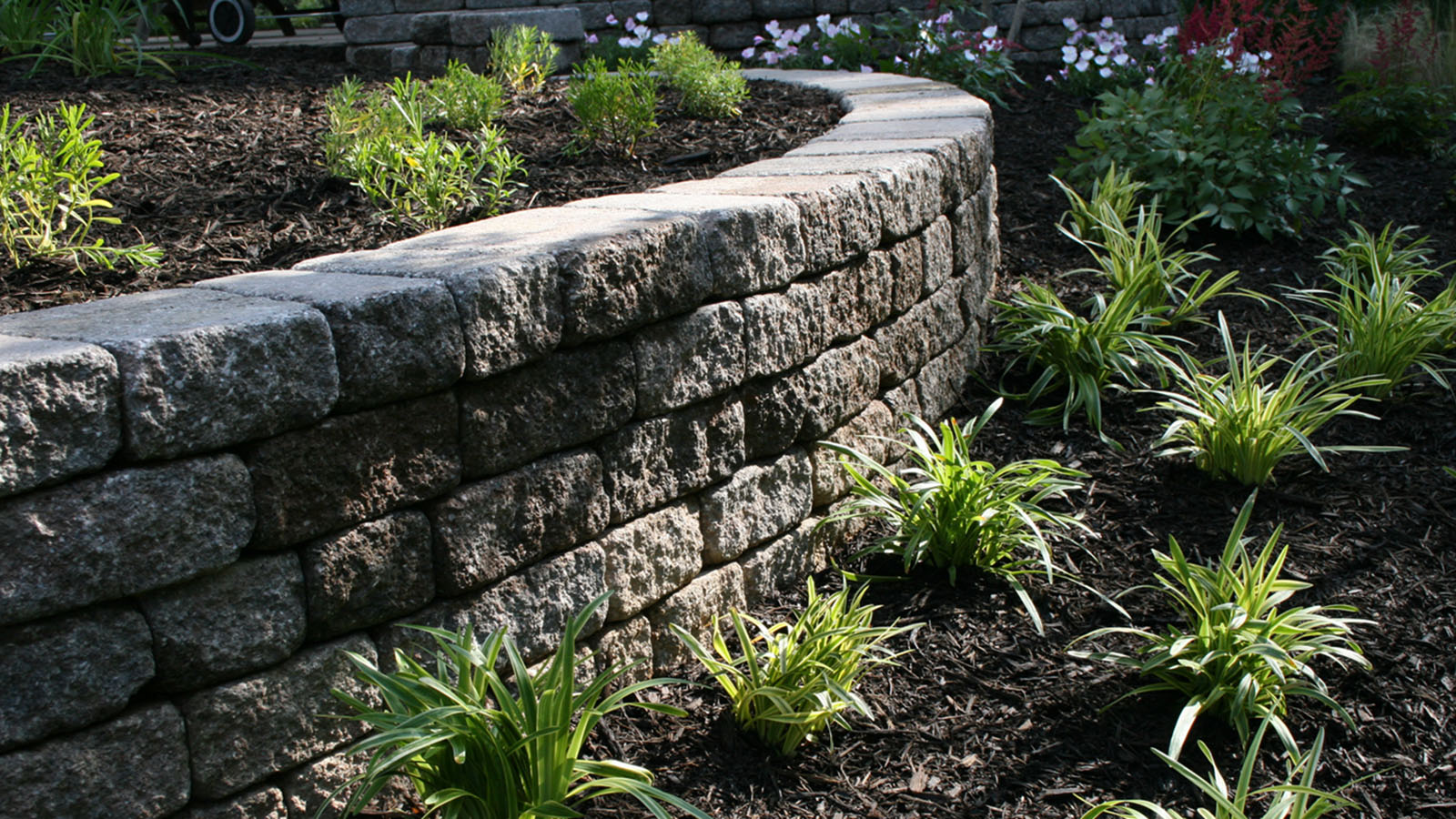
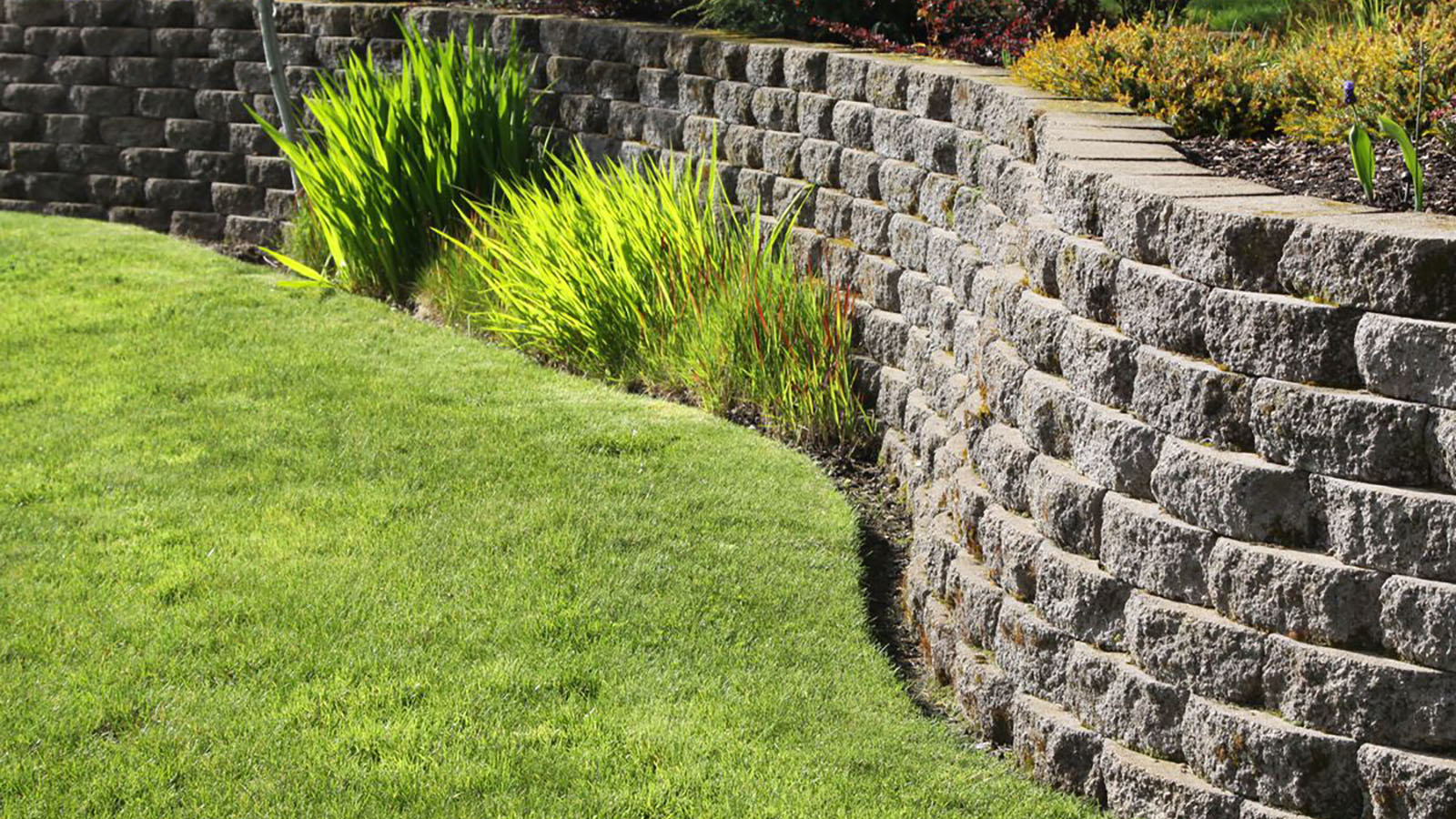
Constructing a Retaining Wall
Retaining walls are an essential part of landscaping and construction projects. They are designed to hold back soil and prevent erosion, creating level surfaces and stable foundations for buildings, walkways, and gardens. Whether building a wall for a garden bed or retaining soil in a sloped area, proper planning and execution are critical for its success.
When building a retaining wall, it’s important to determine the purpose and location of the wall, design and plan your wall and prepare the site before laying a single block. By following these steps, you can create a beautiful, functional, and long-lasting wall that will enhance the beauty and functionality of your backyard, landscape or construction project.
Determine the Purpose and Location
Determining the purpose and location of the wall is crucial for a successful installation. They are typically used to prevent erosion, hold back soil, or create level ground for construction and garden projects.
Factors like available space, desired bed size, slope angle, soil type, and water drainage will determine the wall’s location and height. Generally, a wall should not rise to exceed three to four feet for stability and longevity. Proper planning helps choose suitable materials, design, and drainage solutions for the installation.
Design and Plan
Designing and planning a wall requires consideration of several important factors. Material selection is crucial, with options ranging from brick to concrete, each with unique advantages and disadvantages. Height and length also play a significant role in determining the wall’s ability to withstand pressure.
Construction involves careful attention to the levelness and stability of each block of stone or brick, with different laying patterns offering varying degrees of strength and stability. A well-designed wall can be a functional and aesthetically pleasing addition to any project.
Prepare the Site
Proper site preparation and excavation are crucial for building a stable and secure retaining wall. This involves clearing the area of any debris or vegetation that may affect the wall’s foundation. The site must be leveled appropriately by excavating it to the appropriate depth, considering the slope of the land and the wall’s height.
Once excavated and filled, a layer of gravel should be spread over the area to create a flat and sturdy foundation, followed by a layer of sand for a smooth surface. These preparatory steps are critical to ensure the wall has a solid and stable foundation and can withstand the test of time.
Install Drainage
Proper drainage is essential to ensure retaining walls’ longevity, especially in sloped areas. Water buildup can cause instability, structural damage, and failure. Effective drainage systems, such as gravel backfill or drainage pipes, must be installed behind the wall. Drainage outlets can be added to direct water flow away from the wall.
Soil type and slope should be considered, as high clay content or steep slopes increase the risk of water buildup and erosion. Perforated drainage pipes or French drains can be incorporated. Materials with natural drainage properties can enhance overall drainage and stability.
Build the Base
Creating a solid and sturdy base is crucial for the stability and longevity of a retaining wall. First, excavate the area to six inches of depth and fill it with compacted gravel to provide drainage and prevent water buildup. Next, level the area with coarse sand to distribute the weight of the wall evenly and provide a perfectly level surface for the first course of blocks or stones.
Finally, compact the sand layer flat with a plate compactor or hand tamper to ensure stability. With a strong foundation of compacted gravel and leveled sand, you can begin building your wall using the material of your choice.
Lay the First Course
The initial course of a retaining wall is a critical step in the building process, as it establishes the foundation for the entire backside of the structure. To guarantee stability and avoid future structural issues, it’s crucial to lay the first course of blocks or stones level and secure. To accomplish this, start by placing edge pavers in a straight line, ensuring they’re flush with the wall’s base.
Next, use a level to verify each paver is even with the adjacent line and adjust accordingly to create a level and straight course. Take your time to lay each block or stone precisely, ensuring no gaps or overlaps. Finally, use a rubber mallet to ensure a tight fit for a stable and durable wall.
Install Geogrid
Installing geogrid is crucial to reinforce the retaining wall against excessive pressure. This mesh-like material is placed behind the first course of stones or blocks to prevent the ground from pushing against the wall. Geogrid is commonly used in construction to evenly distribute the weight of the soil and avoid damage to the structure.
To ensure optimal performance, geogrid should be installed on both sides of the wall and tightly packed around with stones or blocks. In summary, geogrid is essential for long-term stability and durability in construction.
Continue Building the Wall
After laying the first course of retaining wall blocks or stones, the wall’s construction can begin. It is critical to continue building the wall by adding blocks or stones while ensuring they are secure and level. Each successive course should be meticulously placed and checked for levelness to create a stable and even structure. Using a level throughout the process is highly recommended to ensure the wall is straight and level.
An appropriate adhesive should be selected to secure the blocks or stones together, preventing gaps and strengthening the wall for years. Building a robust and dependable wall requires attention to detail, patience, and the proper tools and materials.
Backfill and Compact
Proper backfilling is crucial to ensuring the long-term stability of the retaining wall, as it helps prevent movement, bulging, and collapse. High-quality soil free from debris and large rocks is recommended to avoid creating voids and cracks that may compromise the wall’s stability. Adding the soil gradually in layers and compacting each layer ensures the soil is dense and well-anchored, distributing the load evenly.
A plate compactor or hand tamper method is necessary to achieve a solid and stable backfill that can resist the pressure the soil exerts behind the wall. Checking the soil’s level and evenness continuously, filling low spots with additional soil, and compacting it ensures a uniform and stable base.
Finish the Wall
The cap or coping on your retaining wall is essential for practical and aesthetic purposes. It protects the wall from water damage and provides a finished look to the overall landscape design. It also helps define the edge of your outdoor space and create a clear boundary between different areas.
Choosing the correct material for your cap or coping, such as brick or natural stone, can enhance the visual appeal of your landscape while complementing other outdoor features. Consider the impact of a well-designed and installed cap or coping on your wall; it can make all the difference in creating a beautiful and functional outdoor space.
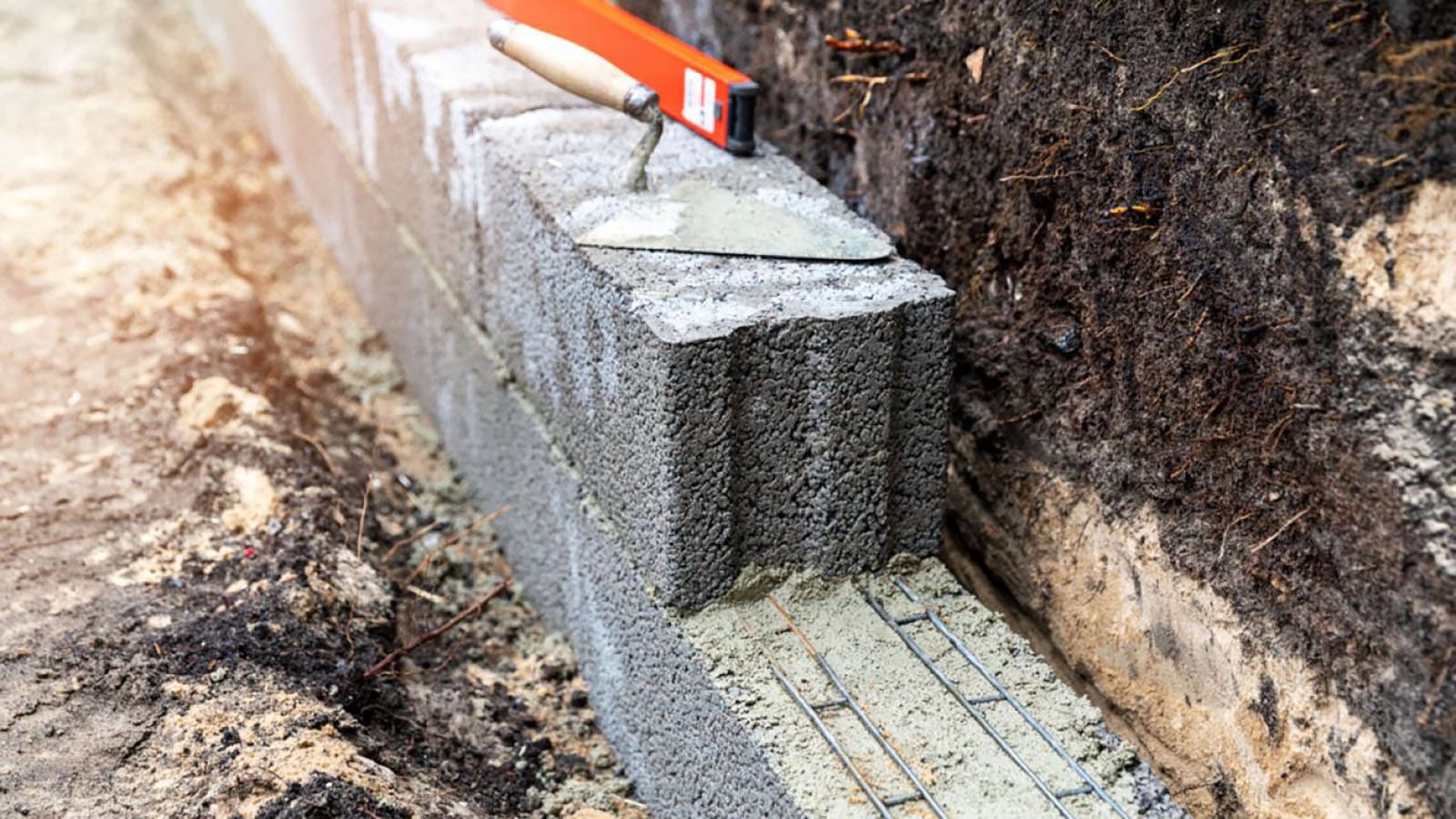
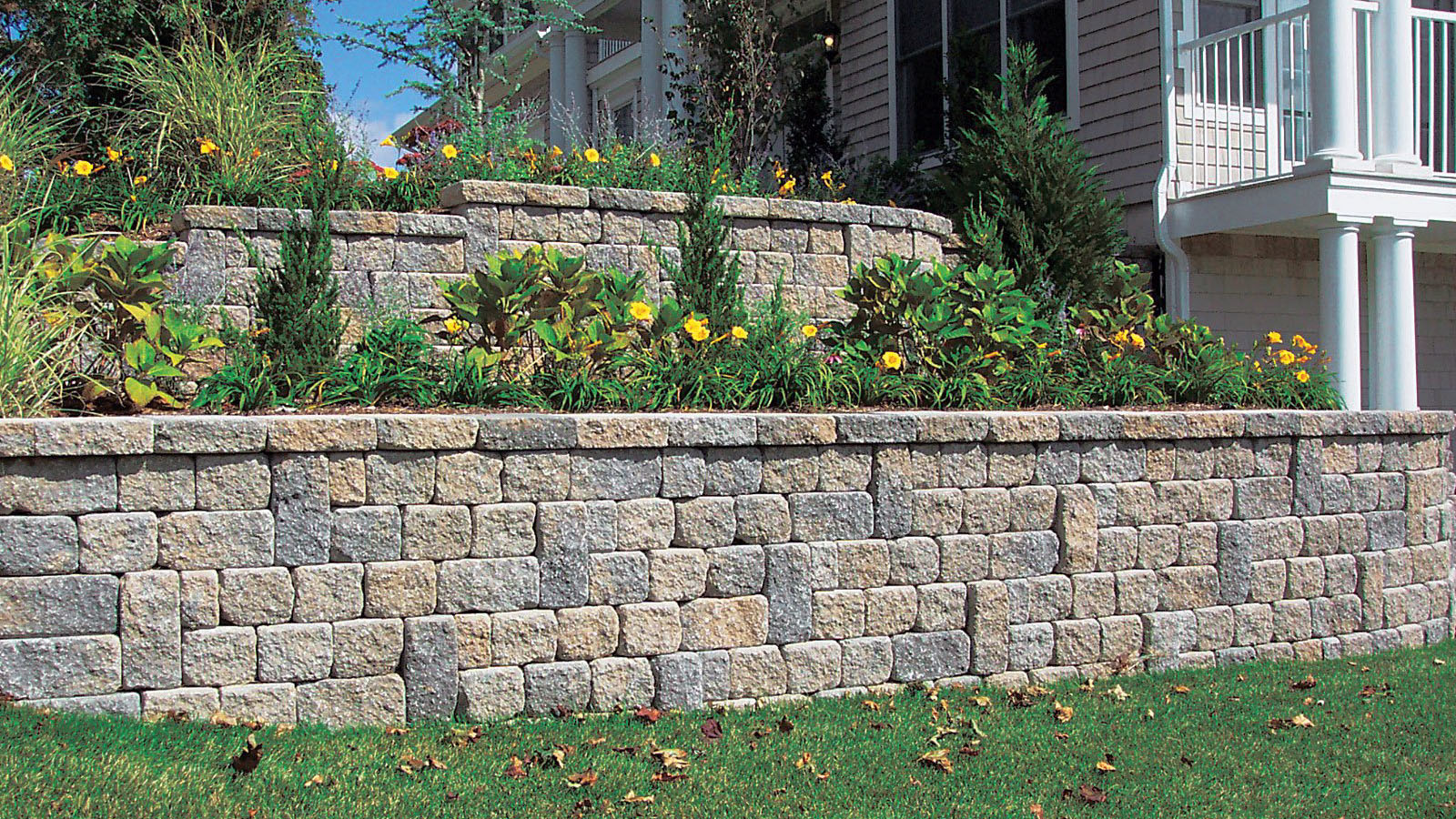
Choosing the Right Block for Retaining Walls
The quality of the pavers chosen for a retaining wall project is critical to its success. Pavers play a crucial role in the wall’s structural support and prevention of soil erosion. Concrete blocks are popular due to their durability, affordability, and versatility in shaping and coloring. Natural stone blocks offer a natural look that blends well with any landscape design and is durable, weather-resistant, and low maintenance.
When selecting pavers, it is essential to consider factors such as size, shape, weight, interlocking system, texture, and color. Pavers with a reliable interlocking system ensure the wall’s structural integrity and prevent shifting or movement. Texture and color play a vital role in the wall’s visual appeal. Seeking advice from knowledgeable sources and consulting with a professional can ensure an informed decision that aligns with the project’s budget, goals, and overall design aesthetics.
Choosing the right pavers for the retaining wall project can ultimately impact the project’s overall quality and durability. To ensure a successful and visually appealing retaining wall project, it is crucial to consider the type and grade of material, size, shape, weight, interlocking system, texture, and color of the blocks.
Material
When building retaining walls, bricks and pavers are two popular materials that can be used alongside others, such as concrete, stone and wood. It is important to weigh each material’s durability, cost and aesthetic appeal before deciding. Before settling on the type of retaining wall blocks to use, it is essential to consider the suitability of bricks and pavers for your project.
Size and Shape
The stability and appearance of a retaining wall can be influenced by the size and shape of the blocks used. It’s important to choose blocks appropriate for the height and length of the wall and that match the desired aesthetic. The dimensions of the blocks, measured in inches, can affect how they fit together in each row and how they align with the two sides of the wall.
Additionally, the wall length, measured in feet, may determine the side distance and the number of rows needed, which can further impact the selection of blocks.
Interlocking System
Retaining wall blocks are often constructed with an engineered interlocking system for easy stacking and securing. When selecting blocks for your retaining wall, look for those with a reliable interlocking system along their edge. This will ensure that the blocks form a stable structure when assembled, providing the necessary strength and durability for your wall.
Weight
The weight of the blocks used in a retaining wall can impact both the ease of installation and the stability of the finished wall. When heavier blocks are used, the installation process may require heavy equipment or machinery to lift and place them into position. However, the additional weight can also improve stability for taller retaining walls, for example, as they are less likely to shift or settle over time.
It is important to consider the weight of the blocks carefully when planning a retaining wall project, as it can have significant implications for both the installation process and the long-term durability of the wall.
Texture and Color
When selecting the texture and color of the blocks for your retaining wall, it’s important to consider the overall aesthetic of the surrounding yard and landscape. For example, a rustic pattern or a gray hue can add visual interest and appeal to an otherwise boring wall.
Additionally, incorporating a unique pattern or selecting bluestone blocks can help the retaining wall stand out as a decorative element in your landscape design.
Cost
When building a retaining wall, the cost of the blocks used is a critical factor to consider. The choice of materials and sizes available in the market vary in price, and some may be more expensive than others. Thus, comparing the cost of different materials and sizes is essential to determine the most cost-effective option for your project. Doing so can ensure you get the best value for your money while meeting your project’s needs.













